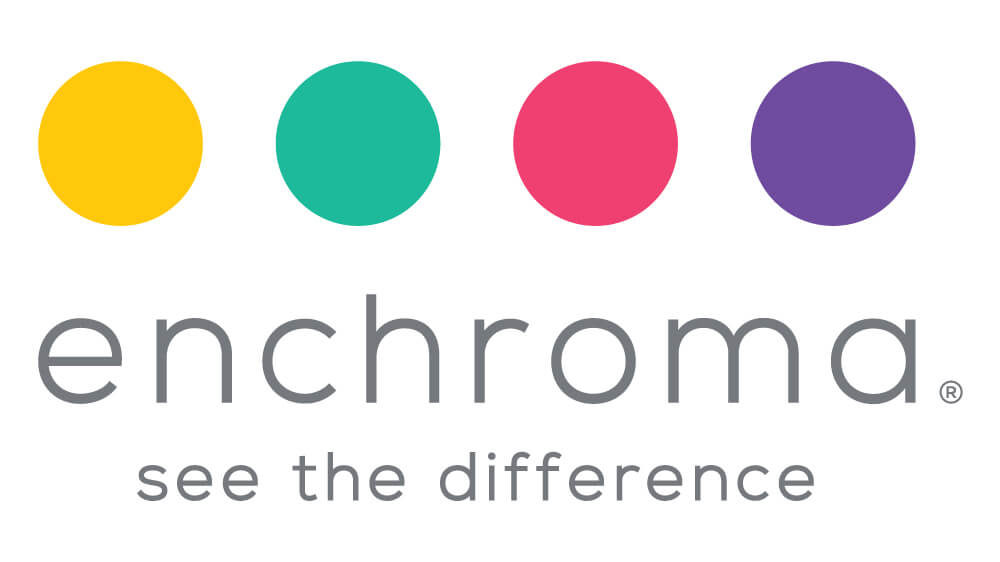A green field full of yellow, red, and purple wildflowers, a Christmas tree twinkling with multicolored lights, and a bunch of festive balloons at a child’s birthday party: these are sights that most people take for granted. But for individuals with color blindness, seeing these things for the first time in all of their vibrancy can be nothing short of a miraculous experience. Thanks to the work of two men, hundreds of individuals are now experiencing true color for the first time in their lives.
In the early 2000s, Don McPherson, who earned his doctorate in glass science from Alfred University, had just finished developing a pair of glasses that he had designed to help surgeons to protect their vision from the harsh effects of lasers while also being able to distinguish tissue and blood more clearly for their procedures. The glasses had already become an immediate success with surgeons; so much so that surgeons began to take them out of the operating room to use them outside their hospitals. In fact, McPherson himself began wearing his own glasses because of the level of brightness that they brought to the world.
However, McPherson did not realize the full scope of the invention until he loaned a pair that he was carrying on his person to a friend of his. The two friends were playing ultimate Frisbee and his friend asked to borrow the glasses. When he put them on, he was momentarily stunned before explaining to McPherson that he could see the orange traffic cones. For a person with normal vision, this may not be revolutionary, but for McPherson’s friend, it was astounding. He had lived his whole life with a form of color blindness that made greens and oranges almost indistinguishable from one another.
McPherson knew that he had stumbled upon something that could be potentially life changing for individuals with certain types of color blindness. He got a research grant and began working on the problem in earnest, ignoring many professionals who said that it could not be done. Working with his partner Andrew Schmeder, he finally produced a marketable product and put his first EnChroma Color Blind Glasses on the market in 2012.
Since then, the glasses have become a viral phenomenon, with videos of color blind patients trying on the glasses and becoming overcome by a new world of color. The glasses have reportedly helped approximately 80% of patients with some form of color blindness. Although McPerson is quick to acknowledge that the glasses are not a “cure-all” or a magic pill, optometrists and ophthalmologists are now taking his product seriously.
There are several different types of color blindness. A person with normal, healthy eyes will have three cones in their eyes, named the S, M, and L cones, and all three will work together perfectly. A person with normal vision will be able to distinguish up to 7 million different shades of color. However, an individual with some form of color blindness will have anomalies in one or more of the cones resulting in an incorrect message sent to the brain. Most of these individuals will still be able to see colors but will have a difficult time telling the difference between certain colors.
Although these new glasses may help anyone to distinguish more colors, the EnChroma glasses are the most effective with individuals who have mild to moderate Protan or Deutan color blindness, otherwise known as red-green color blindness, which are anomalies of the L and M cones. The lenses work by filtering out light wavelengths that may confuse the messages being sent to the brain in someone with red-green color blindness. Four out of five individuals with some type of color blindness reported improved vision while wearing EnChroma lenses.
While the brand started by selling non-prescription sunglasses that worked best outside, over the past several years the scientists at EnChroma have been working to develop indoor and outdoor varieties, as well as lenses that are Rx compatible. EnChroma also makes a Fitover Collection which can be worn over regular prescription eyeglasses and a pediatric line for ages 5 and over.
What started as an accidental discovery has turned out to be a product that has made the world a lot brighter for certain patients. The ability to see colors that were indistinguishable before can be an emotional moment for both patients with these conditions and their families. Contact your optometrist today for more information about the EnChroma brand or take EnChroma’s color blindness test.

